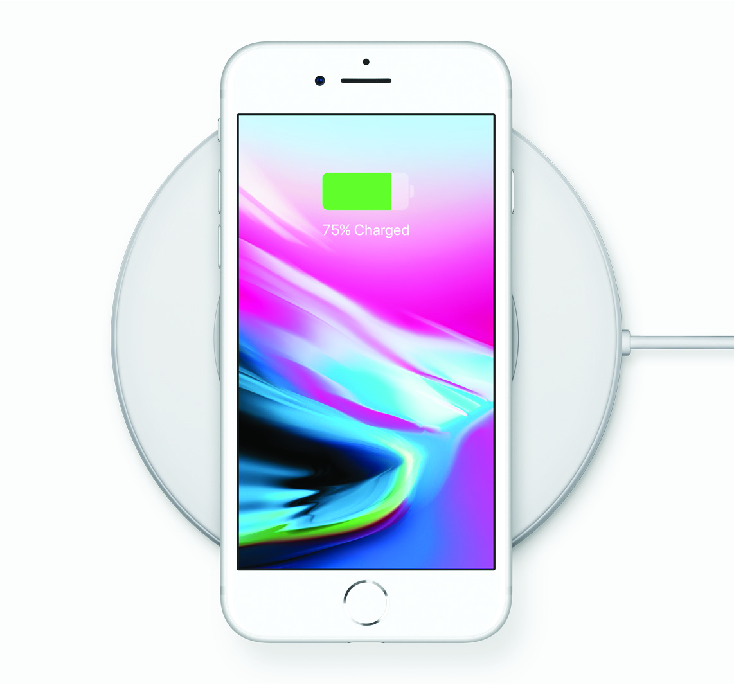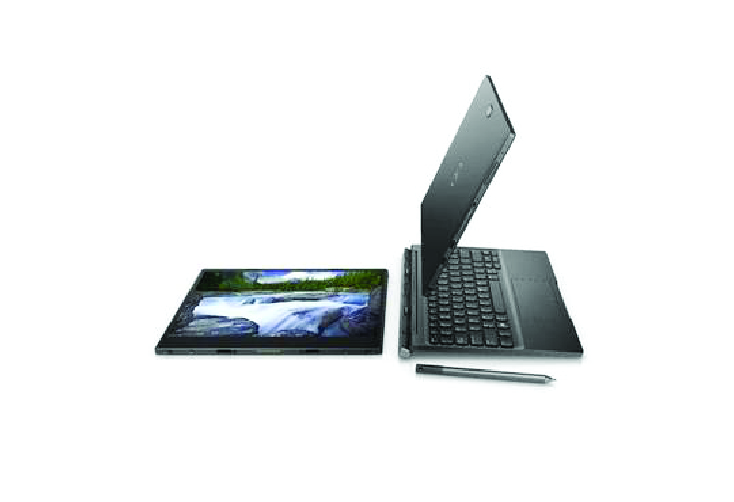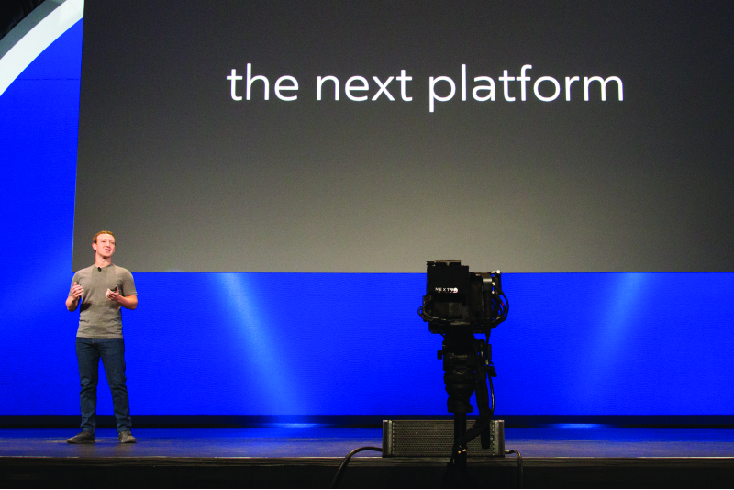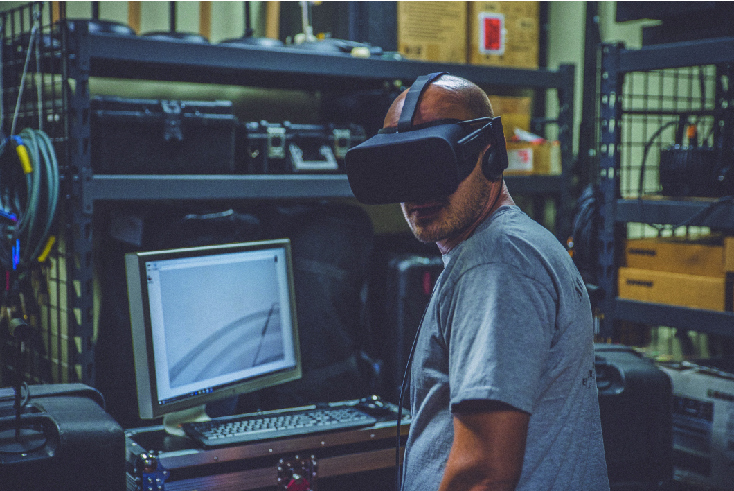Buzzwords and hype are commonplace in the tech sector. While some innovations sink quite fast, others are now staple technologies we rely on to get the job done.
For example, where would we be without ubiquitous wireless connectivity? There would be no nomadic work, no Internet of Things and simple tasks we now take for granted would be deemed impossible or too inefficient.
Good technology does take time though. It’s rare that an innovation revolutionises the way we work and lives after a couple of years of development. It’s not just technical barriers we need to overcome but cultural ones too. Specific biometric technologies, for example, can struggle to quash security and privacy concerns.
Three technologies, in particular, have been under development and are promising to change the way we work and live for some time. This trio is breaking into the mainstream and could be essential workplace tech within the next 12 months:
1. Roll-up Devices

Imagine if clunky projectors screens were replaced with electronic screens that you could unfurl in any conference room when you’re about to give a presentation. Or an ultra-lightweight laptop that you could just fold up and pop in your bag like a newspaper. Not only would it look pretty cool, but you’d work with lighter, thinner displays that are less prone to cracking and can withstand more rough handling.
But progress in this area has been slow, as making truly flexible devices is a lot harder than we ever imagined since it’s necessary to integrate all the electronic components and features needed onto a foldable display.
But there have been breakthroughs. LG demoed an 18-inch display that you can roll up like a newspaper last year. And British company FlexEnable also demoed a graphene-based mechanical pixel system for e-ink displays that could be used to make a paper-thin Kindle.
There are also rumours Samsung is working on a foldable phone – possibly called the Samsung Galaxy X – that uses some kind of hinge. Speaking in a statement, Samsung’s mobile boss said the company is aiming to launch a bendable phone in 2018, assuming it can overcome some problems.
Additionally, there are rumours the phone’s model number might have popped up in a Korean filing. So, we could be close to a commercial release.The prospect of a bendy iPhone has also long been mooted – but Apple has failed to deliver. Yet.
LG also invested heavily in its production lines to make flexible OLED screens for smartphones and unveiled a 77-inch flexible display this year. While a Shenzhen-based display company Royole Corporation recently unveiled its fully flexible FlexPhone screen that’s a mere 0.01mm thick.
Cambridge-based business FlexEnable is developing Organic Liquid Crystals Displays (OLCDs) on plastics that can meet the needs for flexible displays in many applications including consumer electronics, automotive and digital signage. The company’s marketing communications manager, Desi Aleksandrova, said: “OLCD can be manufactured cost-effectively in large sizes using existing LCD infrastructure. The technology is expected to be on the shelves in 2019.”
“Once flexible displays become mainstream, we can imagine displays being embedded into almost any object, bringing surfaces to life in ways not possible before. They can enhance our daily lives both at home and the office by becoming part of the environment and displaying information whenever we need it, while remaining ‘hidden’ when not in use.”
“With the proliferation of connected devices, the use of flexible displays will give them more functionality and make them even more practical for the users. One particular example are professional wearables with large displays wrapped around the wrist, which can be used in warehouses where workers needs up-to-date information to hand to complete the job. In the future, when flexible displays become foldable and rollable, we can imagine a smartphone with a wraparound display that opens out into a tablet – doubling the size of the device and the amount of information being displayed,” Aleksandrova added.
2. Wireless Charging

Ditching the mess of cords on your desk is a long-held dream for many workers. And, as Apple unveiled its iPhone 8 and iPhone X last month, wireless charging was touted as a key feature for both devices – surely this is a clear indicator of the demise of cables?
The rising abundance of wireless charging is thanks to the Qi wireless charging standard, which is the universal standard where wireless power transfer occurs using electromagnetic induction. Samsung has been integrating the tech into its Galaxy phones for some time and when Apple signed up to the standard, it was seen in the industry as a big thumbs up for widespread wireless charging.
It’s not just Apple’s latest iPhone incarnations that can be charged on any Qi-supported mat, Apple also announced plans to launch the “AirPower” charging mat in 2018, where other *shock horror* non-Apple devices could also power up.
There are still a handful of issues that need ironing out with this technology. For example, you still need a cable to connect wireless charging pads to the mains supply, charging is intermittent and stops when you lift your device off the pad, it’s still slower to charge than plugging into a power supply and is a little pricey with a quality Qi charger costing between £30 – £50.
It’s not just smartphone that could benefit from wireless charging. MIT spinout WiTricity recently collaborated with Dell on a new laptop, called the Latitude 7285, that charges wirelessly through magnetic resonance technology and using the Dell Wireless Charging Mat.
It’s a two-in-one tablet and laptop where you can connect a keyboard to unleash the full delights of Windows 10. The only fly in the ointment is the extra $579.98 you’ll have to pay for the wireless charging keyboard and mat.
But it’s the first step to stop you from ever having to crawl under your desk to connect your computer to the power supply.

3. Virtual Reality (VR)
VR technology is no longer just the darling of the video gamers, it’s got serious intentions in the workplace and, since 2012, the number of active VR companies has grown by 250%.

This surge in popularity really started when Facebook spent $2 billion buying VR firm Oculus Rift. Soon, companies all over the world started to build their own VR headsets. Standalone headsets will soon be launched from Google, Oculus and HTC, which could make mass adoption easier.
Thomas Géré, CEO and co-founder at The Realities Centre, said: “VR as an expensive and high spec tech has been around for a while, but the current VR, which is much lighter, cheaper, with great realistic sense of presence and immersion, is new. This has been made possible by economies of scale mostly thanks for miniaturisation and higher and higher performance of computing parts for smartphones.”
“As a result, a lot more developers have been venturing into VR creation of content because they could eventually afford development versions of the headsets, this has been truly transformative. Those have been combined, as well with improved tech in computer vision and other innovations, to make the VR and MR (Mixed Reality) headsets and experiences of today, which are really worth trying if you haven’t already,” Géré added.
The applications in the corporate space are abundant. For example, VR is taking on videoconferencing to make people feel more connected. With more than half of employees around the world preferring face-to-face conversations with colleagues, this is a neat technical solution for remote teams.

And VR could help staff who want to work from home, bucking the recent trend where companies including IBM, Honeywell, and Aetna have all forced staff to commute to the city and work in a central office, rather than give them the flexibility to work where they want. Strapping on a VR headset instead of facing the daily commute certainly sounds more appealing to me.
Recruitment is another emerging application area where applicants can inhabit their new office space and environment before they sign on the dotted line. And VR is already being used in the construction industry and large companies (including Walmart and DHL) for training purposes.
…
Once these three technologies are all fully mature, the combination of unrestricted power, boundary-free work and flexible displays could revolutionise both the way we work and the buildings we work in.
Seamless wireless charging would not only negate the need for power cords, but power sockets altogether. You could wander around a building and your electronic devices automatically charge.
Flexible displays could be embedded wherever you need them. Your (wirelessly charged) flexible smartwatch/phone hybrid sits on your wrist. VR technology means you’re not longer restricted to the four walls you’re sitting in – you’re always connected to your colleagues.
Some technologies are worth the wait.


 Dr. Gleb Tsipursky – The Office Whisperer
Dr. Gleb Tsipursky – The Office Whisperer Nirit Cohen – WorkFutures
Nirit Cohen – WorkFutures Angela Howard – Culture Expert
Angela Howard – Culture Expert Drew Jones – Design & Innovation
Drew Jones – Design & Innovation Jonathan Price – CRE & Flex Expert
Jonathan Price – CRE & Flex Expert















